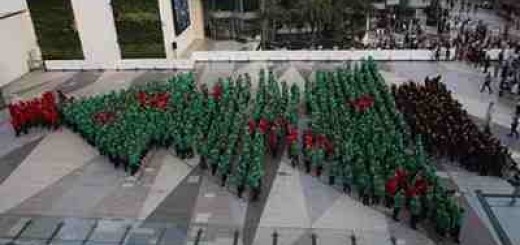Researchers from Australia have re-formed a well-known experiment, which verified quantum physics's strange forecasts about the nature of actuality, by confirming that reality doesn't really exist until we measure it – at least, not on the very small level. Our common reasoning would accept that the object is either wave-like or particle-like by its very nature, and our measurements will have nothing to do with the solution. But quantum theory states that the outcome all depends on how the object is measured at the end of its voyage. And that's precisely what a group of scientists from the Australian National University has now found. Lead researcher of this recent study and physicist Andrew Truscott said in a press release "It proves that measurement is everything. At the quantum level, reality does not exist if you are not looking at it," Known as John Wheeler's delayed-choice thought experiment, the experiment was first suggested back in 1978 by means of light beams rebounded by mirrors, but back then, the equipment required was pretty much impossible.
Now, nearly 40 years later, a group of scientists has accomplished to reconstruct the experiment using helium atoms dispersed by laser light. To positively recreate the experiment, the group confined a bunch of helium atoms in a suspended state calles as aBose-Einstein condensate, and then emitted them all until there was only a lone atom left. This selected atom was then released through a pair of laser beams, which made a rough pattern that proceeded as a crossroads that would scatter the path of the atom, much like a solid grating would distribute light. They then casually added a second grating that recombined the tracks, but only after the atom had already had gone through the first grating. When this second grating was added, it directed to constructive or destructive interference, which is what you'd guess if the atom had moved both paths, like a wave would. But when the second grating was not added, no interference was detected, as if the atom selected only one path.
The point that this second grating was only added after the atom has gone through the first crossroads proposes that the atom hadn't yet determined its nature before being measured a second time. So if you believe that the atom did take a specific track or tracks at the first crossroad, this means that a future measurement was disturbing the atom's path, clarified Truscott. He said "The atoms did not travel from A to B. It was only when they were measured at the end of the journey that their wave-like or particle-like behaviour was brought into existence,"
Even though this all sounds extremely weird, it's essentially just a proof for the quantum theory that already rules the world of the very small. Using this theory, we've succeeded to develop things like LEDs, lasers and computer chips, but up until now, it's been tough to verify that it really works with a lovely, pure demonstration such as this one. The complete outcomes have been issued in Nature Physics.

















